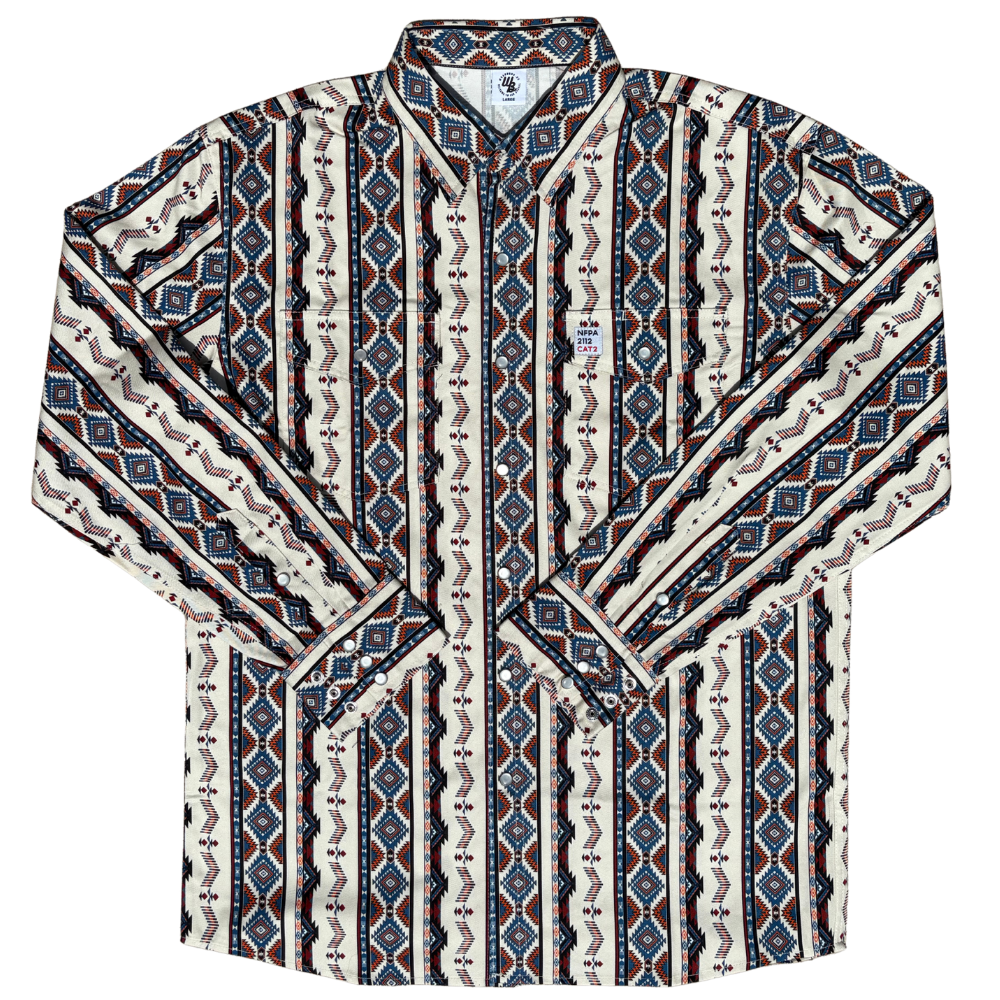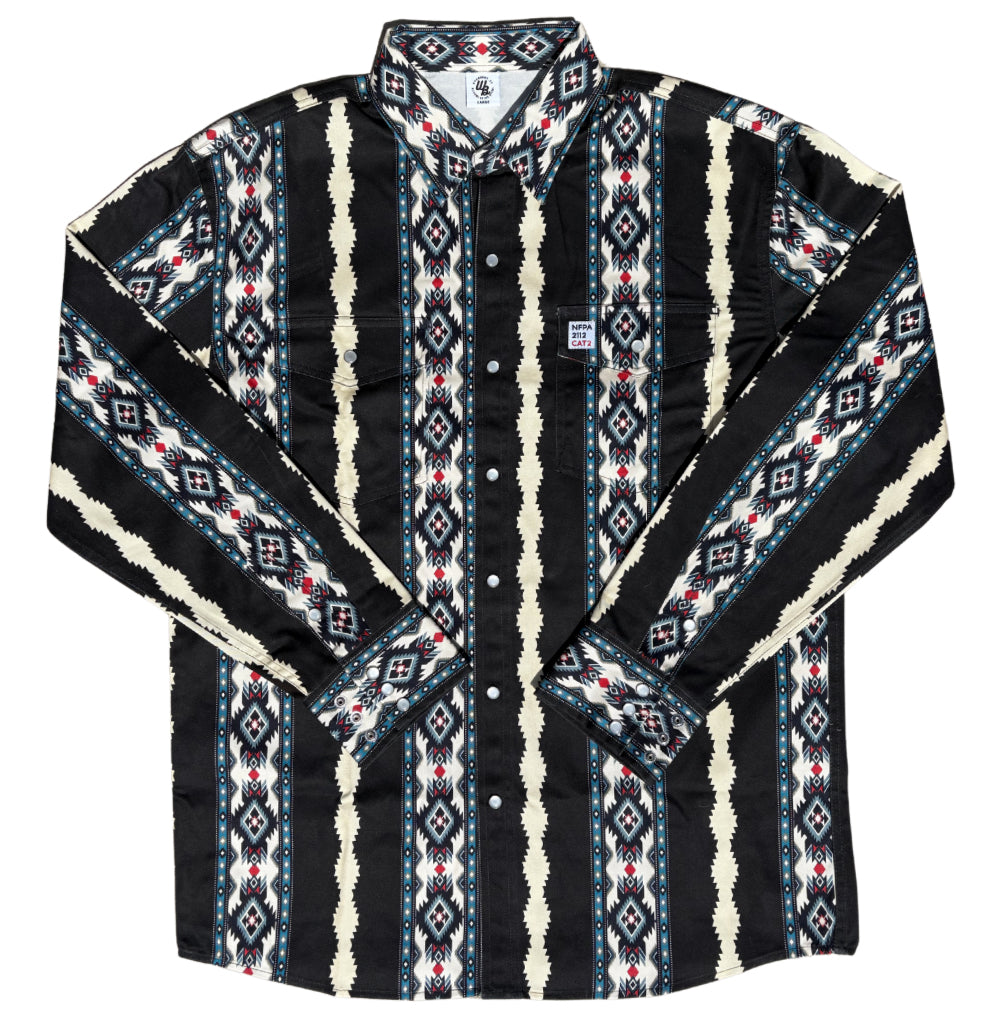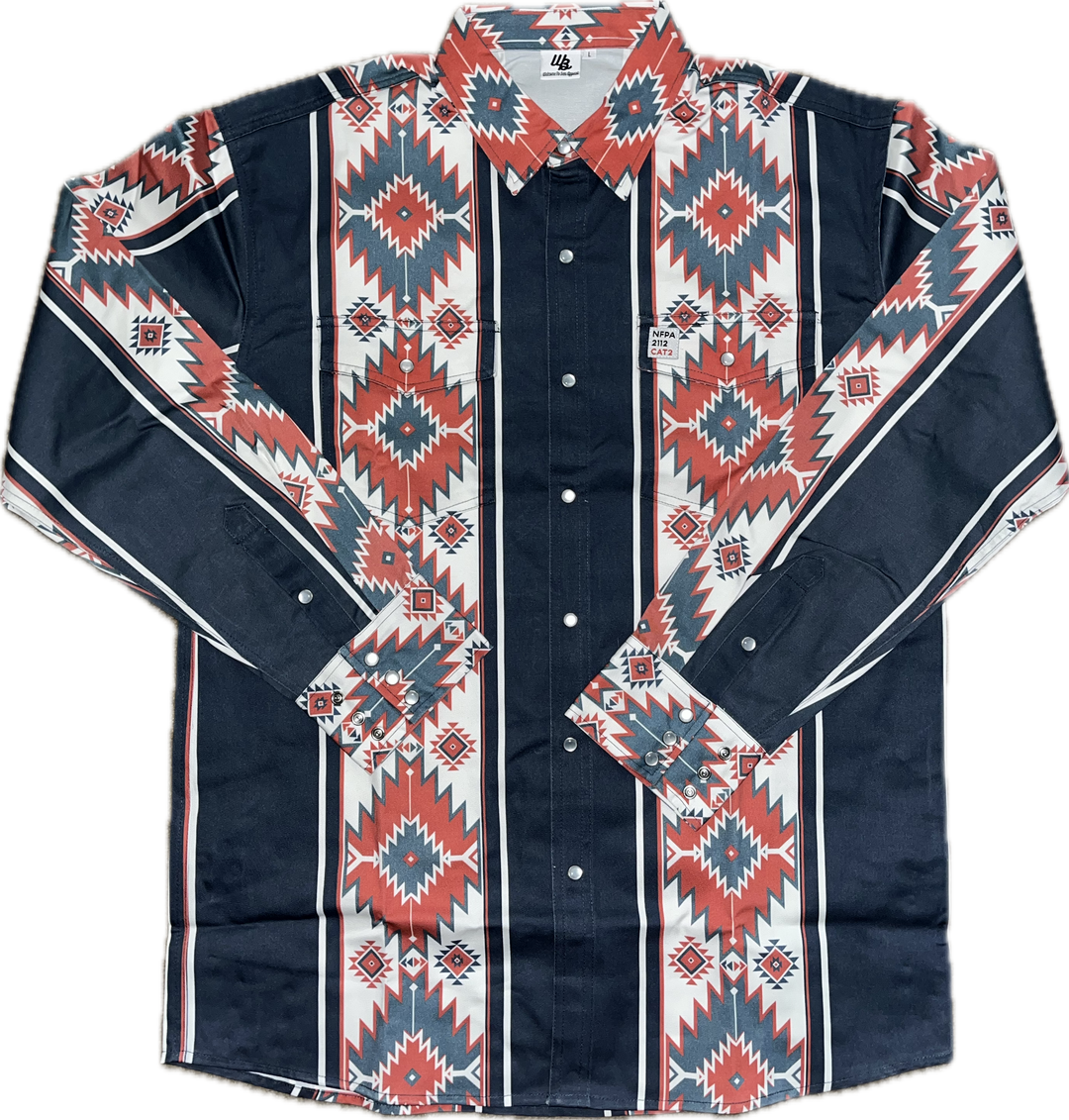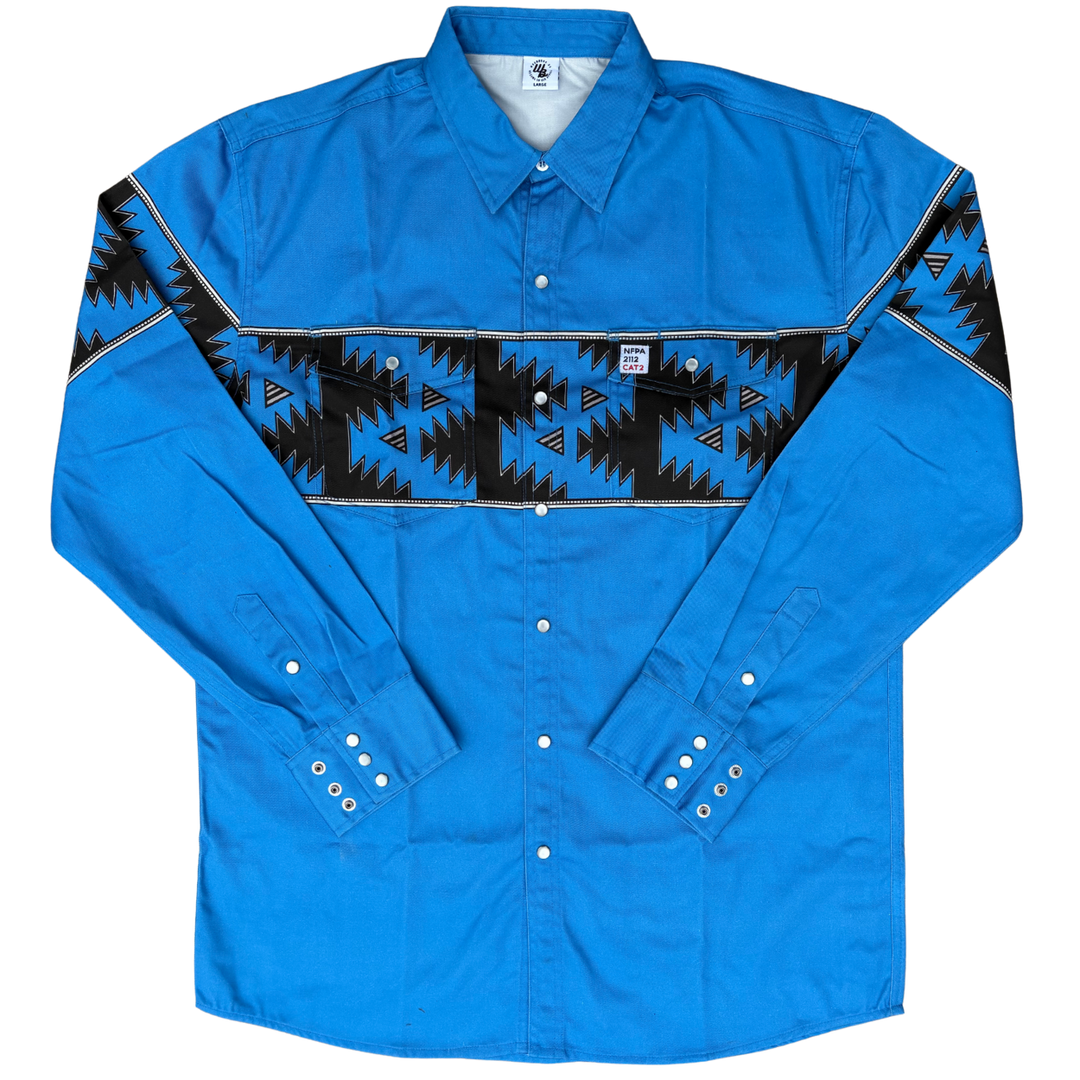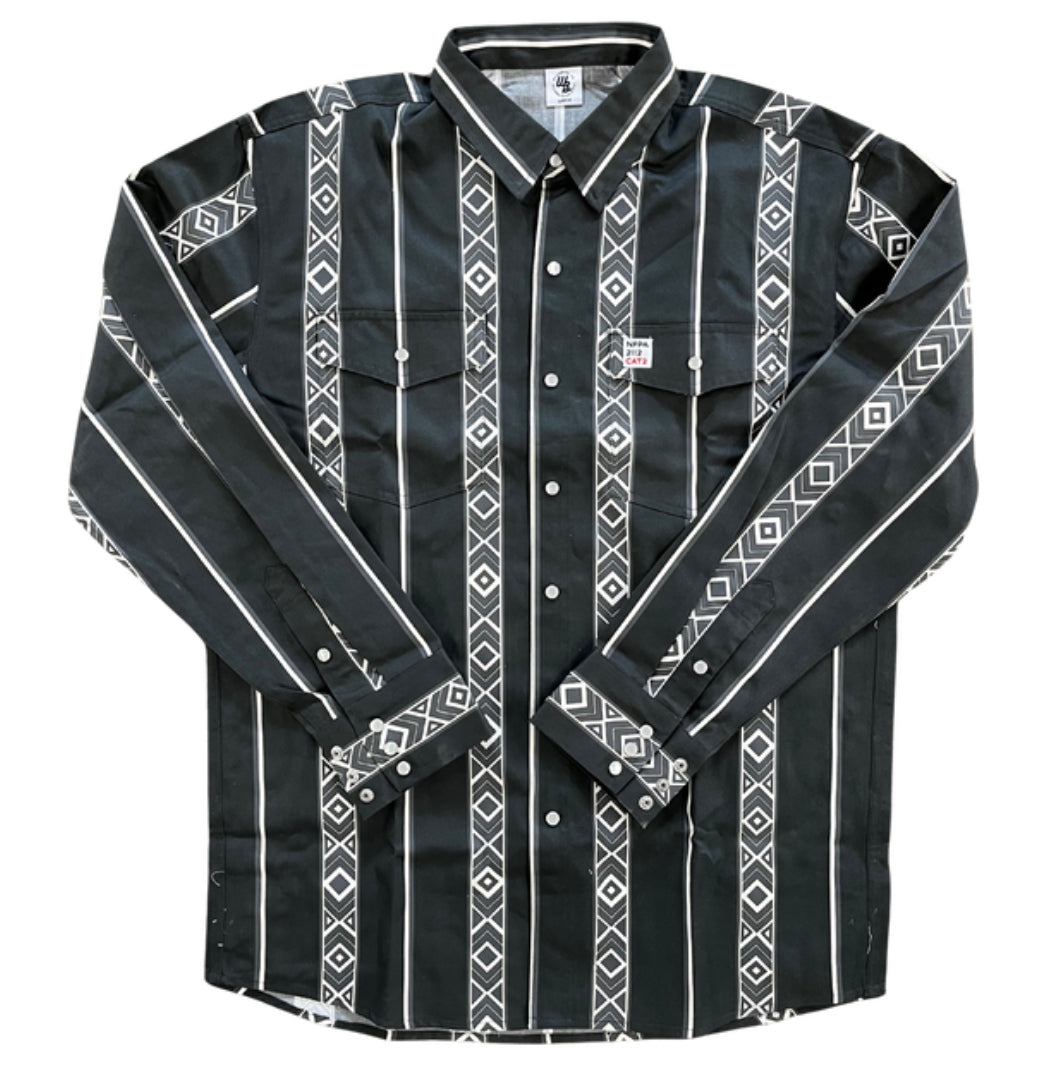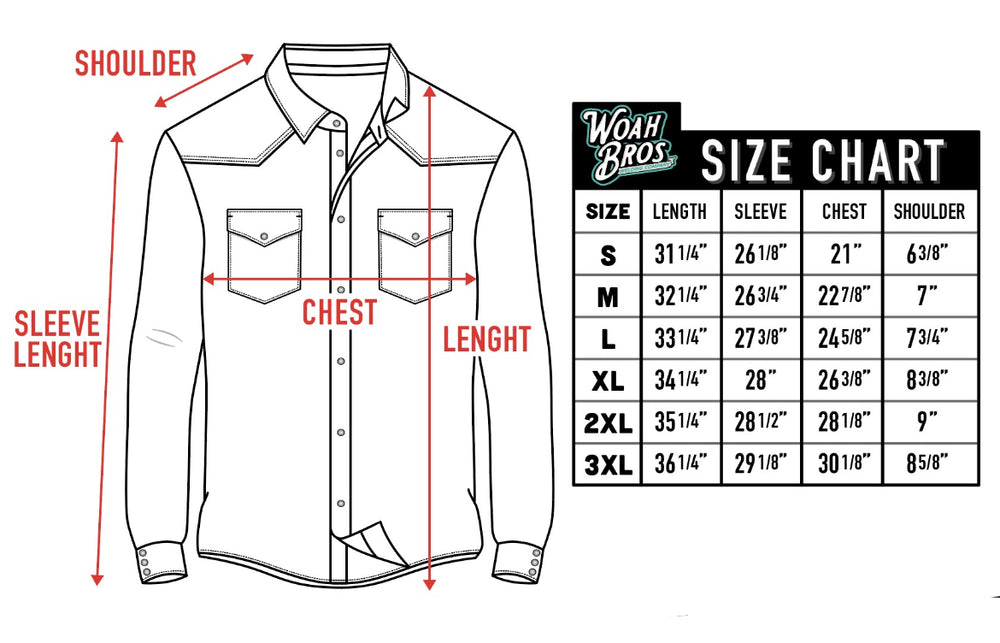The Science Behind FR Fabrics: How Welding Shirts Protect You
When you’re on the job striking arcs and showering sparks, it’s easy to take your trusty welding shirt for granted. But have you ever wondered why that flame-resistant shirt protects you, or what makes FR fabrics special compared to ordinary clothing? Understanding the science behind FR fabrics – and how your welding apparel is engineered for safety – can give you a new appreciation for the gear that keeps you fire-safe. In this article, we’ll break down how fire-resistant clothing works at the fiber level, and explain how a quality FR welding shirt can save you from serious burns. Grab your safety glasses and let’s dive into the science of FR, made simple for the everyday welder.
What Does “Flame-Resistant” Mean?
First off, let’s clarify the term. Flame-resistant (FR) fabric is a textile that’s been engineered to resist ignition and self-extinguish if it does catch fireus.tencatefabrics.com. In practical terms, this means if an FR shirt is exposed to an open flame or intense heat, it won’t continue burning once the heat source is removed. Instead of bursting into flames, the material will tend to char and smolder without spreading the fireus.tencatefabrics.com. This is very different from ordinary clothes: a regular cotton or polyester shirt can ignite and keep burning rapidly, which is the last thing you want if hot welding sparks hit you.
It’s important to note that “flame-resistant” is not the same as “fireproof.” FR garments can still burn if conditions are extreme enough, but they are designed to slow down the burn and limit the damage. Think of it this way: FR clothing gives you time. It significantly slows the spread of fire on the fabric, giving you a chance to pat out the ember or shed the garment before a minor incident becomes a life-threatening injuryus.tencatefabrics.com. The material will self-extinguish typically within seconds after the flame source is goneus.tencatefabrics.com. In contrast, a non-FR fabric might keep flaming until it’s entirely consumed.
Also, FR fabrics won’t melt and drip like some synthetics do. A big hazard with regular polyester or nylon clothing in welding is that it can melt under high heat and fuse to your skin (causing horrific burns). FR fabrics are specifically made to avoid melting; many are based on cotton or specialty fibers that char but do not melt when exposed to extreme heattrdsf.com.
Inherent vs. Treated FR Fabrics
Not all FR clothing is made the same way. There are two main categories of FR fabrics used in welding shirts and other protective gear:
-
Inherent FR Fabrics: These are materials that are intrinsically flame-resistant because of their chemical structure. The flame resistance is built into the fibers themselves. Common examples include aramid fibers (like Nomex®, Kevlar®) and modacrylic fibers. These fibers have ring-shaped polymer structures and other elements (like aromatic rings, nitrogen compounds) that naturally resist combustion and high heatus.tencatefabrics.com. Inherent FR fabrics do not lose their protection over time because the flame resistance is part of the fiber – it can’t be washed out or worn away. For instance, Nomex (an aramid by DuPont) will not support combustion in air and won’t melt; it chars at high temperatures and stays intact to protect the wearerprudentialuniforms.comprudentialuniforms.com. Modacrylic is often used in blends; it’s a synthetic fiber that is also flame-resistant and is usually combined with other fibers (like cotton) to improve comfort. When you see an FR shirt labeled “inherent FR,” it typically means the fabric (often a blend of modacrylic, aramid, and other fibers) is designed to be flame-resistant for the life of the garment.
-
Treated FR Fabrics: These are fabrics (often natural fibers like cotton) that by themselves are not very flame-resistant, but have been chemically treated to impart FR propertiesus.tencatefabrics.com. A popular example is FR-treated cotton. Cotton is comfortable and breathable – great for welding shirts – but normally it will ignite and burn. However, cotton can be treated with special flame-retardant chemicals (for example, using phosphorus-based compounds) that **bond to the fiber and enable it to char rather than burn】prudentialuniforms.com. The treatment works by reacting with the gases released during burning, creating a char barrier that slows fire spread and reduces heat transferus.tencatefabrics.com. Treated fabrics basically have an add-on that stops combustion: when exposed to flame, the chemicals may release non-flammable gases that dilute the oxygen and combustible gases, and promote a insulating char layerus.tencatefabrics.com. The result is the fabric self-extinguishes. These treatments are usually done at the textile manufacturing stage (e.g., the cotton is saturated with a flame retardant in a controlled process). Modern high-quality treated FR fabrics are designed so that the flame resistance lasts through many washings – often the entire useful life of the garmentus.tencatefabrics.com. However, harsh laundering (like bleach or oversoaping) can deteriorate the treatment faster (hence the care guidelines in our first article).
So which is better? Inherent vs. treated each have pros and cons. Inherent FR fabrics won’t ever wash out their protection and often handle heat well, but they can be more expensive and sometimes less breathable (depending on fiber). Treated cotton FR fabrics tend to be soft and comfortable (everyone loves a broken-in cotton shirt) and often cost a bit less, but you must care for them properly to avoid stripping the treatment. Many FR welding shirts on the market are actually blends – for example, a mix of modacrylic (inherent FR) with cotton that’s treated. This gives a balance of comfort, durability, and protection. The key is that no matter the type, the garment meets safety standards for flame resistance (such as NFPA 2112 for flash fire or ASTM F1506 for arc flash, if applicable). Always check that your FR apparel is properly certified for the hazards you face.
How FR Fabrics Work to Protect You
Now, let’s get into the science of how FR clothing actually defends you in a welding environment. It boils down to a few core principles:
1. High Ignition Threshold: FR fabrics are engineered to make ignition difficult. This can be due to the fiber chemistry (inherently non-flammable fibers) and/or the treatments applied. For example, the fibers may have a high Limiting Oxygen Index (LOI), meaning they require a higher concentration of oxygen to sustain burning than what’s in airus.tencatefabrics.com. In plain terms, it means the material won’t catch fire as easily. When a spark lands on an FR welding shirt, the fabric is less likely to ignite compared to a standard cotton shirt. Often, the spark will just bounce off or might singe a small spot that self-extinguishes.
2. Self-Extinguishing Behavior: Perhaps the most critical feature – if an FR fabric does ignite or begin to burn, it will self-extinguish rapidly once the heat source is removedus.tencatefabrics.com. Chemically, what’s happening is either the fiber itself doesn’t support combustion, or the flame-retardant treatment kicks in. Cotton, for instance, normally burns steadily; but if it’s FR-treated, as soon as it starts to burn it will form a stable char layer. That char is blackened carbon which insulates the underlying fabric and blocks further oxygen from feeding the flameprudentialuniforms.com. Essentially, the fire runs out of fuel because the charred part of the shirt won’t burn and it shields the rest. Additionally, treatments can release non-combustible gases (like nitrogen or ammonia) that push out oxygen locally and snuff out the flameus.tencatefabrics.com. The end result: instead of a roaring flame, you get a charred spot that quickly dies out.
3. Heat Resistance and Integrity: FR fabrics are made to withstand high temperatures without breaking apart. Some fibers (like aramids) won’t even begin to char until extremely high temps (700-800°F or more). Even when they do char, they stay intact – they don’t burn through easilyprudentialuniforms.com. This is hugely important because it means the fabric keeps providing a barrier between your skin and the heat source. For a welder, think about a glob of molten metal or a shower of sparks: you want your shirt to take the abuse and not immediately develop a hole. FR fabrics tend to hold together longer under heat, whereas a regular fabric might ignite, burn open, and expose your skin. Also, as mentioned, FR materials avoid melting. Instead of melting into a goo (which transfers heat terribly onto skin), they’ll either remain as a fabric or turn into an ash-like char. This can greatly reduce burn injuries. According to textile experts, FR garments create a protective barrier that slows heat transfer to the wearer’s skinus.tencatefabrics.com, which can be the difference between a minor singe and a serious burn.
4. No Fuel Contribution: When FR fabrics char, they don’t feed the fire with additional fuel. By contrast, if a non-FR cotton shirt burns, the cotton itself is fuel, making the fire bigger. Or if a polyester shirt burns, the melting plastic can actually add fuel (and cause terrible injury). FR gear is designed so that the garment itself will not worsen a fire – it will never drip flaming material or explode into a torch. In tech terms, FR fabrics have a limited heat release and low afterflame time in testingus.tencatefabrics.com. This property is what keeps a small incident from escalating. For example, a spark might burn a pea-sized hole in your FR sleeve, but it won’t engulf your arm. You’d likely just see a scorch mark that stopped spreading on its own.
To put it simply, FR clothing works by stopping the combustion process. Regular fabric + flame = continuous burn. FR fabric + flame = char and self-extinguish. It’s a bit of fire science that ends up saving skin in the field.
How FR Welding Shirts Keep You Safe on the Job
Now let’s make it specific to welding. Welding is considered “hot work” – you’ve got extreme heat, sparks, spatter, and even UV/infrared radiation. Here’s how your FR welding shirt plays a crucial role in your overall safety gear ensemble:
-
Stopping Sparks from Turning into Flames: A welding arc can reach temperatures of 10,000°F at its core, and it throws off sparks and molten metal that are easily 1,500–2,500°F (hotter than a typical fire)waylanderwelding.com. These sparks can fly up to 35 feet and will ignite anything flammable in their pathwaylanderwelding.com. If those sparks land on a non-FR cotton t-shirt or, worse, synthetic hoodie, you could have a fire on your body within seconds. FR shirts stop this chain reaction. The sparks may cause momentary scorching or small pinpoint chars on the fabric, but an FR shirt will not erupt in flames. It might get some little burn holes, but the flame won’t spreadus.tencatefabrics.com. This means if you’re wearing your FR welding shirt properly (buttoned up, sleeves down), a random spark landing on you is far less likely to cause serious injury – you’ll probably just brush it off and keep working.
-
Protection from Molten Metal Spatter: When welding or cutting, you often get blobs of molten metal flying around. FR clothing, especially heavier-weight cotton variants, provides a tough layer that can absorb the impact of spatter. The fabric might char where the spatter hits, but it will resist ignition and insulate you from the heat. For example, if a blob of slag hits your sleeve, an FR shirt will tend to char on the surface but not transmit nearly as much heat through to your skin compared to regular cloth. This reduces the likelihood of second-degree burns. Many welders also wear leather aprons or sleeves for added spatter protection, but the FR shirt underneath ensures that if anything rolls off the leather onto your shirt, it still won’t catch fire.
-
No Melting Synthetic Disaster: A lot of workers have been burned badly because they wore a polyester shirt or fleece while welding and it caught a spark. Synthetics will ignite/melt and cause awful injuries. FR welding shirts are usually made of cotton or blends designed not to melt. Even some FR blends that include a bit of nylon are engineered so that the nylon is shielded by other fibers so it won’t melt onto skin. The upshot is, by wearing an FR shirt, you’re avoiding one of the worst welding hazards – the shirt itself becoming a hazard. Always avoid non-FR synthetic apparel while weldingtrdsf.com. Your FR shirt has your back (literally) by being built from fibers that won’t turn into a molten plastic mess in extreme heat.
-
Compliance with Safety Standards: For professional welders, OSHA and industry standards often require flame-resistant clothing on certain jobs (like in oil and gas sites, or any job with potential for fire/flame exposure). A good FR welding shirt will be rated to meet these standards (such as NFPA 2112 for flash fire, or ASTM F1506 if arc flash is a concern). By wearing an FR shirt, you’re not only physically protected but also meeting workplace safety requirements – which protects your job. It’s an easy way to comply with rules that are there for your safety. Always check that your FR apparel has the appropriate labeling indicating it meets the necessary FR performance standards.
-
Comfort and Layering: Modern FR fabrics have come a long way. Brands (like Carhartt, Bulwark, and yes, WoahBros) use advanced blends that are soft, breathable, and moisture-wicking while still meeting FR specsus.tencatefabrics.com. This matters because if your FR gear is comfortable, you’re more likely to wear it properly at all times. A breathable FR welding shirt keeps you cooler so you don’t feel the need to roll up sleeves (a big no-no, you want those arms covered!). The science behind moisture-wicking fibers and breathable weaves in FR clothing means you can work longer without overheating, all while staying protected. Some FR shirts even offer UV protection inherently due to their fabric thickness – an extra perk for welders working outdoors.
In short, your FR welding shirt is a lifesaver in scenarios that involve heat and flame. It’s your first line of defense against the very real fire and burn hazards of welding. By resisting ignition and limiting any fire damage to itself, the shirt protects you – so you suffer little to no injury from incidents that could have been catastrophic in regular clothes.
Stay Safe with the Right FR Gear
Understanding the science behind FR fabrics underscores one key point: flame-resistant clothing is essential safety gear for welders and anyone in high-heat jobs. It’s not just about meeting regulations – it’s about staying alive and avoiding life-changing injuries. The specialized fibers and treatments in your FR shirts and jackets are there to take the heat so your skin doesn’t have to.
Next time you put on your FR welding shirt, remember all the tech and testing that went into it: the inherent fire-resistant fibers or durable treatments that keep it from igniting, the way it will form a protective char if hit by flames, and how it won’t fuel a fire or melt onto you. This is high-tech material science working on the job site, quietly guarding you while you focus on the work.
As a welder, you face enough hazards – don’t let your clothing be one of them. Invest in quality FR apparel and take care of it (see our first blog on caring for FR clothing for tips). Replace it when worn or damaged. And of course, always wear your FR gear correctly (fully buttoned, sleeves down, tucked in) to ensure maximum protection.
Your safety is worth it. At WoahBros, we’re proud to offer a range of FR shirts for welders that combine cutting-edge flame-resistant fabric technology with the comfort and durability welders need. When you wear a WoahBros FR welding shirt, you’re wearing the science of safety – and getting serious welding style to boot. Stay safe out there, and remember: the right gear, used the right way, lets you melt the metal – not your clothes.
Ready to upgrade your welding safety gear? Check out WoahBros’ collection of FR Welding Shirts and equip yourself with the best in fire-resistant clothing. We’ve got you covered so you can weld with confidence and peace of mind.
Sources
-
TenCate Fabrics – What Exactly Is Flame Resistant Fabric?us.tencatefabrics.comus.tencatefabrics.com
-
Prudential Uniforms – What Makes FR Clothing Flame Resistant?prudentialuniforms.comprudentialuniforms.com
-
TenCate Fabrics – Breaking Down the Science: How FR Fabrics Resist Ignitionus.tencatefabrics.comus.tencatefabrics.com
-
Waylander Welding – Welding Clothing Tips to Keep Safe from Hazardswaylanderwelding.com
-
TRADESAFE – Common Mistakes Wearing FR Clothing (re: synthetic melting)trdsf.com




